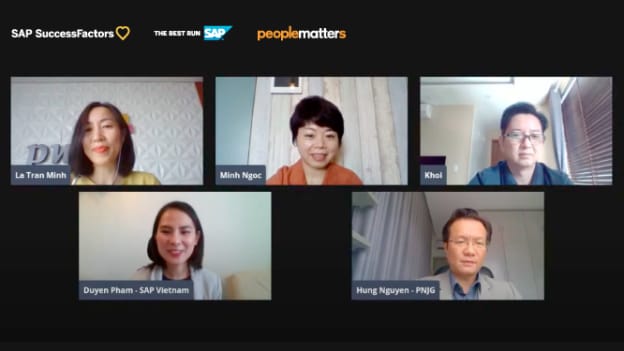The five Ws of building a business case for HR Transformation

To invest in HR technology to align people practices to business outcomes, usually, we need to justify what is the return of that investment. In a recent virtual panel discussion by People Matters and SAP, the experts shared the key constructs for building a business case for HR transformation.
Sujay Bhat, Director - HR Technology Strategy Advisor, HR Value Advisory, SAP shared the Five W Approach of building a business case for HR transformation.
Sujay shared, “In its very early stage it is critical to understand how this entire transformation exercise will help stakeholders achieve their business goals and achieve their business needs right, so the alignment to business needs and stakeholder needs is extremely important.”
To get the end-in-mind of the transformation journey right, here are some key points you need to exercise:
- Understand what is happening around you– not only in your industry but within the workforce, with your competitors and understand how this intervention becomes extremely relevant to you. Based on this information, define what is the project goal, what is the project charter or what is the business outcome that you want to deliver through this project.
- Understand what you want to change through this transformation. To be able to do that you need to understand what are the current gaps, what are the baselines in the critical HR KPIs or metrics that you have and what is the gap that you need to bridge. You also need to understand what you need to change, how are you doing today against those key areas or key metrics or KPIs. What is the target, and how does the intervention that you're planning through transformation help you go from the current state to the desired stage. You also need to be able to understand what are the risks, and what is the cost of doing nothing– what if you do not change anything, what are the implications, and that will in no way answer the question of why change and what we need.
- Before we start this project, we need to understand what is the existing landscape of the investment is. We need to understand what are the contract lines if you're working with third-party providers for each of these investments that you already have. You need to understand where do you start and what will give you a quick win, to demonstrate to your management the benefits of doing this exercise, and you also need to be able to align to key business milestones.
- Timing is another critical area to understand when it comes to the relevance of the HR transformation journey. Where you start depends on the areas that you want to focus on and how you spread it out. Understand what are the advantages and disadvantages, understand what is the dependency on each of these elements, because they need to be in complete synchrony with one another. When you're planning where to start, the step is also tied back to the quick wins that you need to demonstrate.
- Lastly, with internally, is the most important activity to realise your transformation plans. Who are your internal project owners, who are your sponsors, and who are your change agents? It is very important to find champions within and external to organisations who can lead this journey of transformation to execution.
Here is a quick look at what other leaders shared in the session:
“Human Resource Transformation is an inevitable trend that is happening more and more strongly” – Ms. La Tran Minh – PwC Consulting Vietnam
"Five factors to ensure the success of HR transformation (5T): Understanding, Speed, Optimization, Motivation, Evolution." – Anh Hùng CHRO PNJ
"With the set business goals, the HR department needs to help businesses see how to influence the human factor to help achieve that business goal in the fastest, best and most effective way." - Mr. Khoi CHRO FE Credit
"HR needs to ensure the "Enabler" role, prepare plans and persuasive factors before proposing to the leadership. Listen to feedback from leadership to adjust those recommendations accordingly. During the implementation process, HR needs to ensure a harmonious role, listening to stakeholders." – Ms. Ngoc HR Director Telio

















